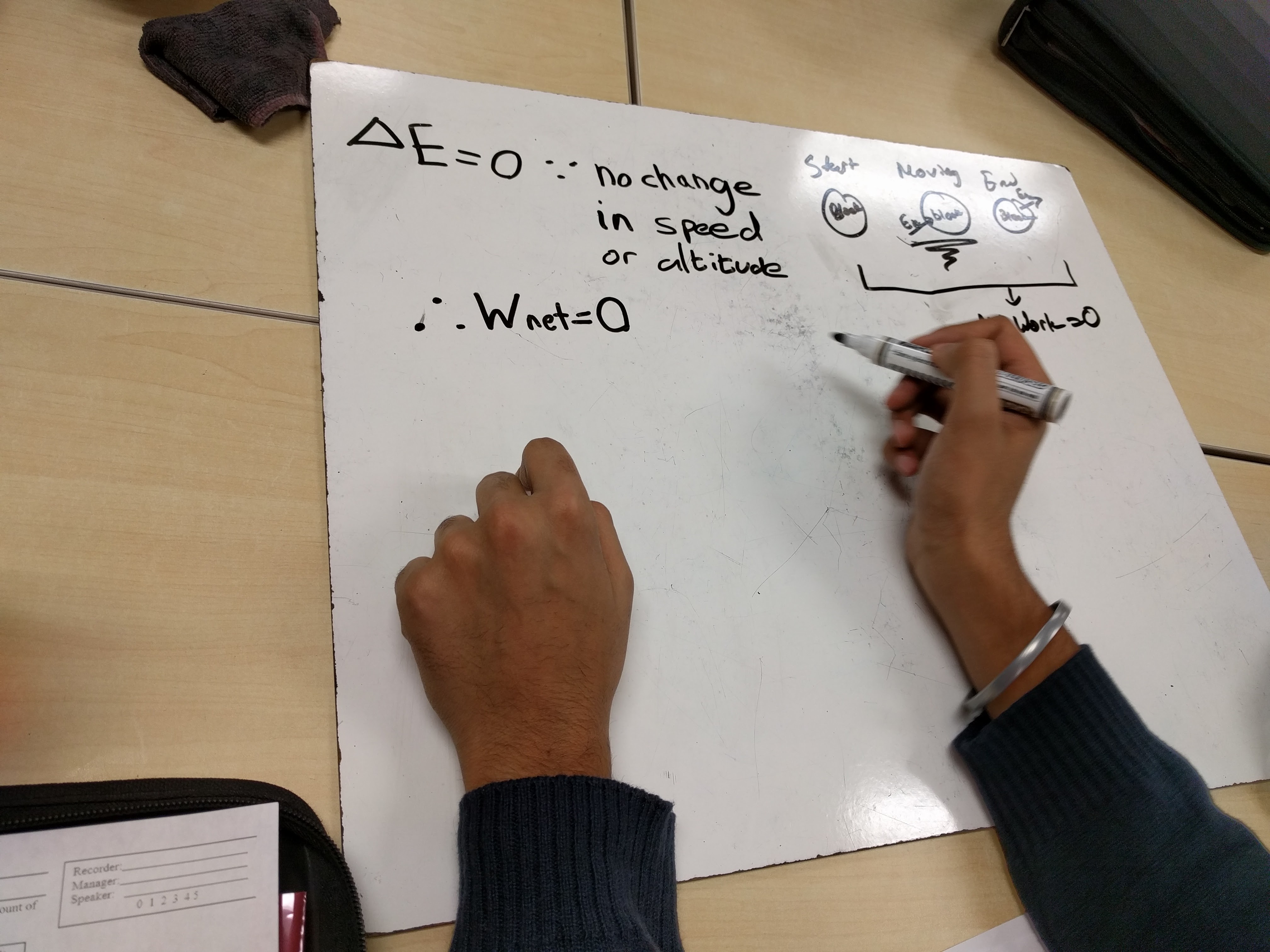Power vs. Work
Today, we completed another worksheet in our table groups. This one was about power, and had us going to the stairwells and running up and down to figure out what power is.
Today I learned:
There was a demonstration using a ball carried forward 2m, held up 1.5m above the ground. Point A is the start, before the ball moves and point B is the end, after the ball stops moving. Using W = ΔE, we find out that a net work of 0 is done on the ball, as there is no change in energy. Quite the departure from common sense!

Discovering that the net work done is zero!
P = W / Δt which means that P = ΔE / ΔT and P = FΔD / ΔT and P = FV. This is the same equation, just using different values to substitute and will all come to the same result. Use the one which has the values given.
Power depends on your change in energy and time. There is no kinetic energy, as in both the start and end I was at a standstill. That meant, my gravitational potential energy was left, and that was based on my mass, height and acceleration of gravity. I spent approx. 8.31 s going up, and I spent 245W of power. I could probably power a light, but not for very long.
Efficiency is the useful power that is outputted divided by the input energy multiplied by 100% or, Pout/Pin*100%. This is essentially a percentage of how much power is converted from the input to the output to be used. For example, if I outputted 100W going up the stairs, but I consumed 200W of energy to do so, my efficiency would be 50%.
Today I wondered:
How efficient would the transfer of human movement (energy) into power for a lightbulb?
How would different forms of energy be measured? For example, potential energy is Eg = mgh, but what about for example chemical?
Today I had an intriguing idea:
- velocity = Δdisplacment / time
- acceleration = Δvelocity / time
- Newtons = mass * acceleration
- Joule = Newtons * distance
- Watt = Joules / Time
After Unit Reflection
This post connects to requirement #5b. This was the day where we learned about power. Power, was shown to be work over time, which is building upon the lesson on work. There was also the experiment about power used going up the stairs. This was actualy a good example, as it was easy to simulate and easy to understand.
This post also connects to requirement #5c. Power/Energy and efficiency go hand in hand. Efficiency is a key measure of how much energy was actually used, from what was put in. Especially in everyday items like car mileage and lightbulb efficiency, it is important to know how much power is actually being used to ensure that we’re not using too much.